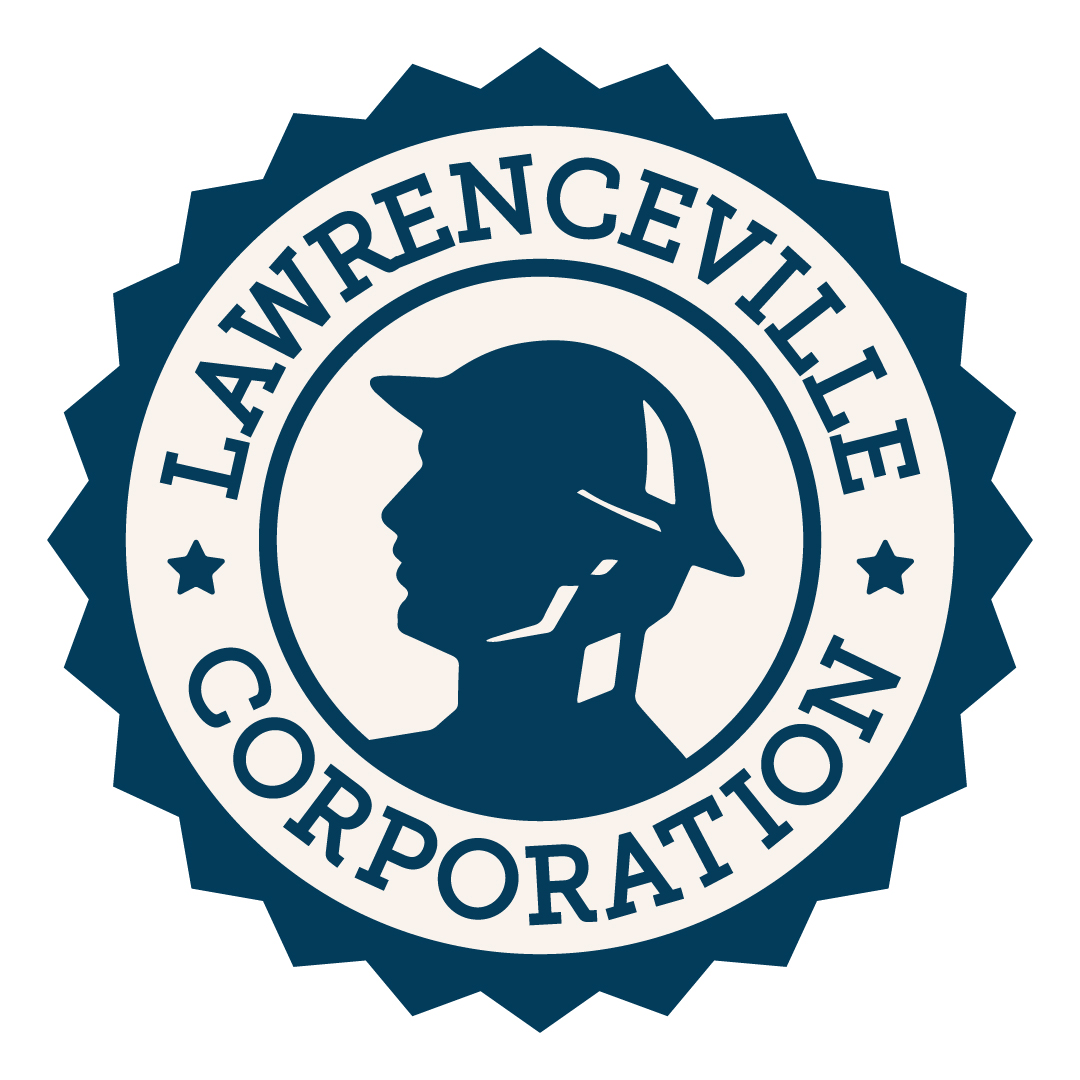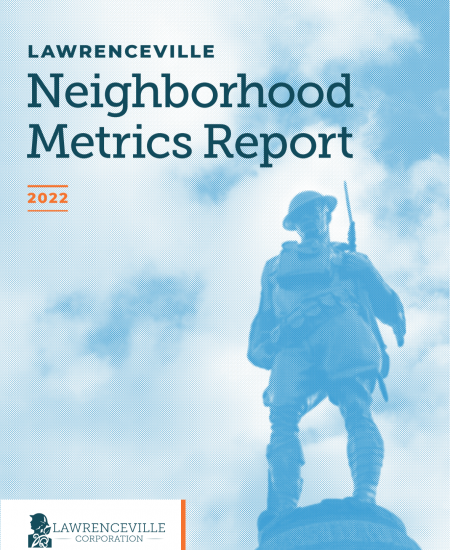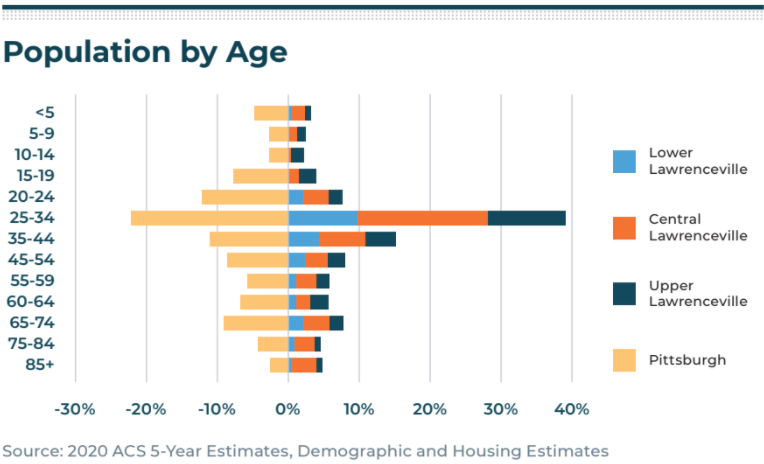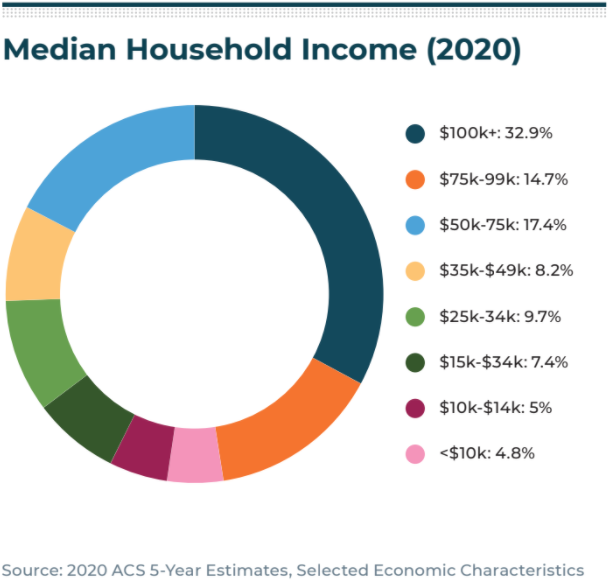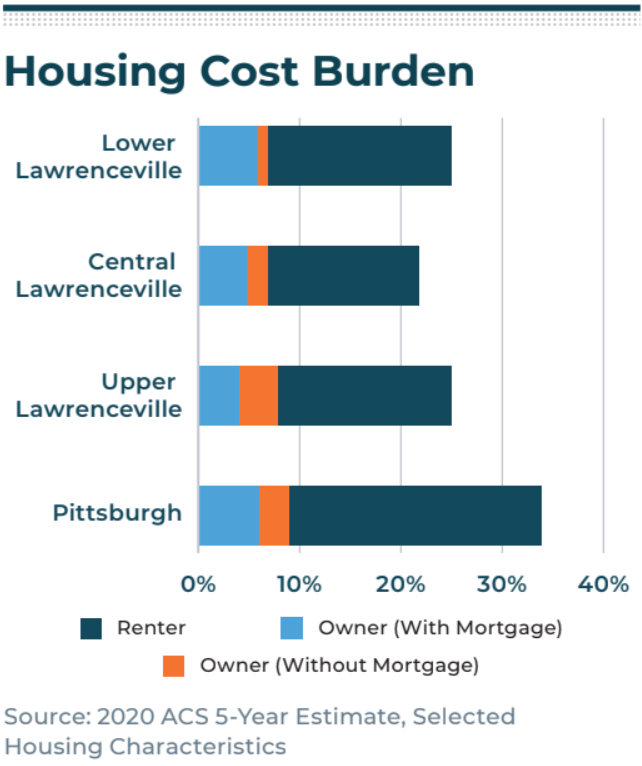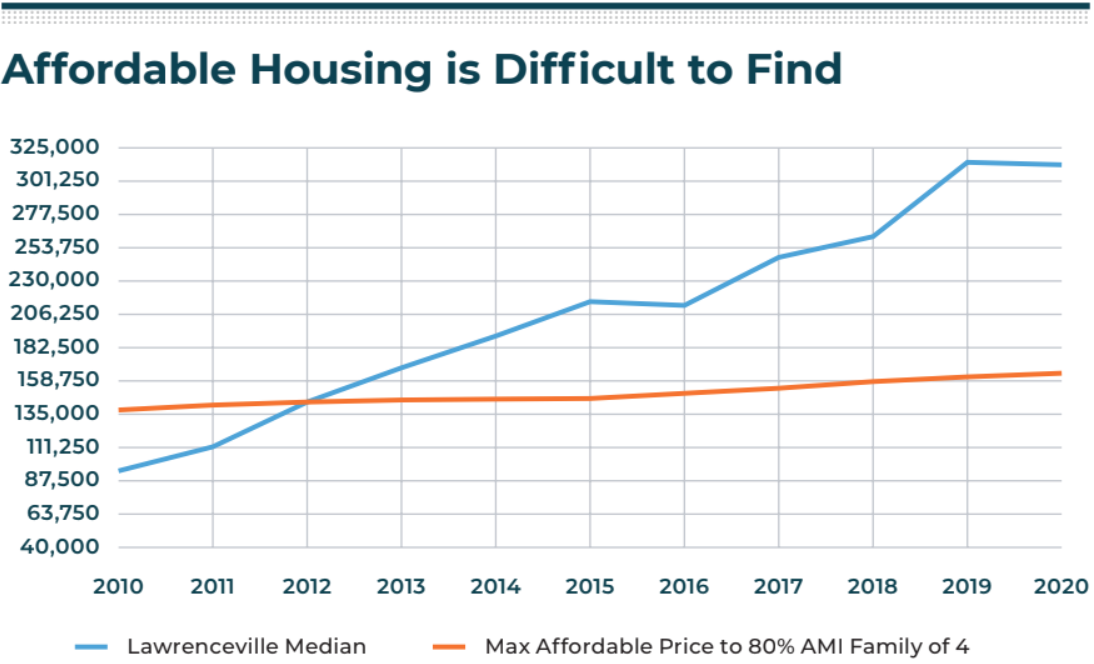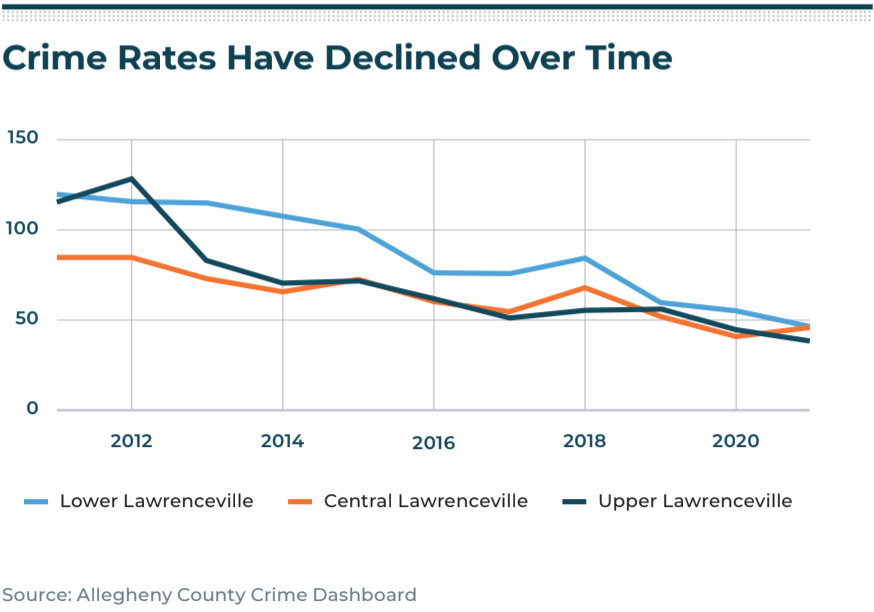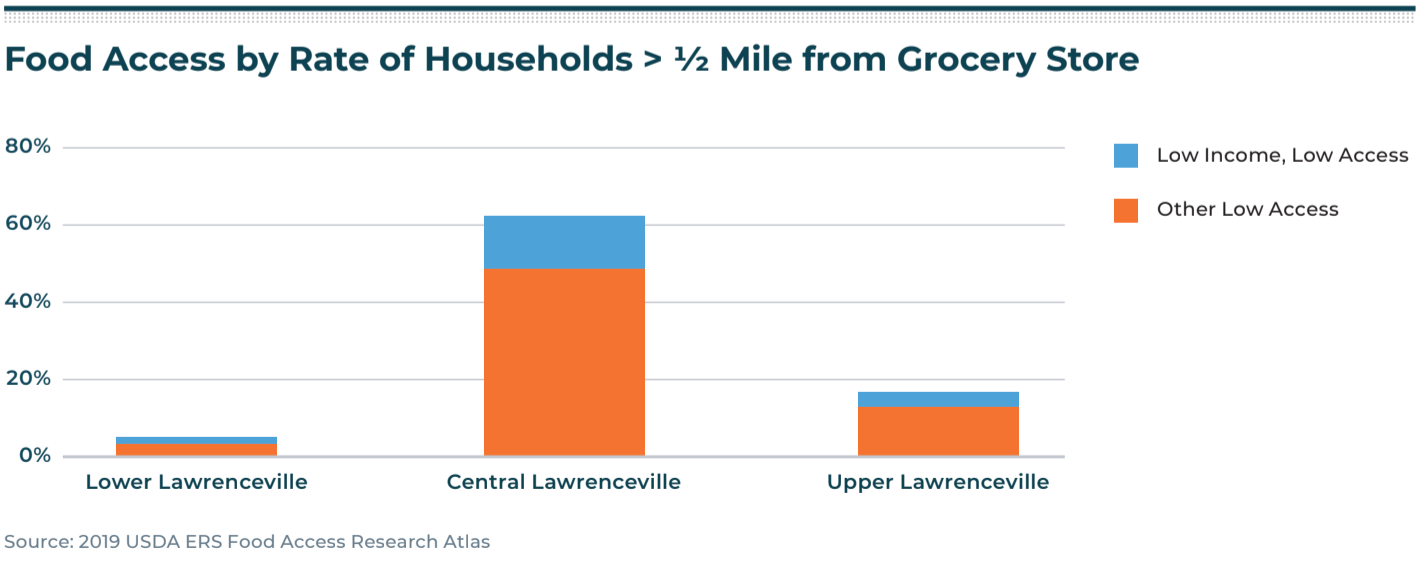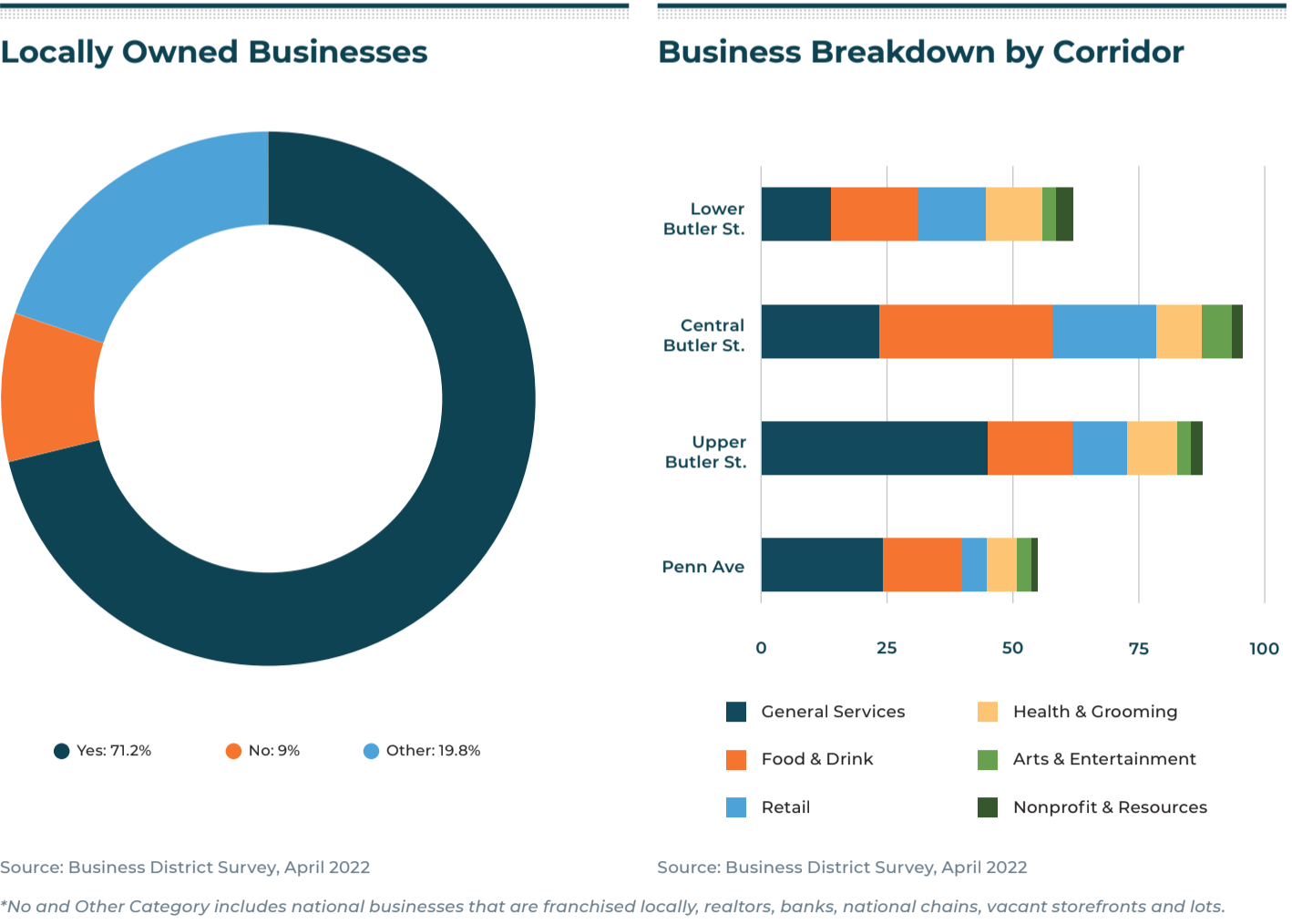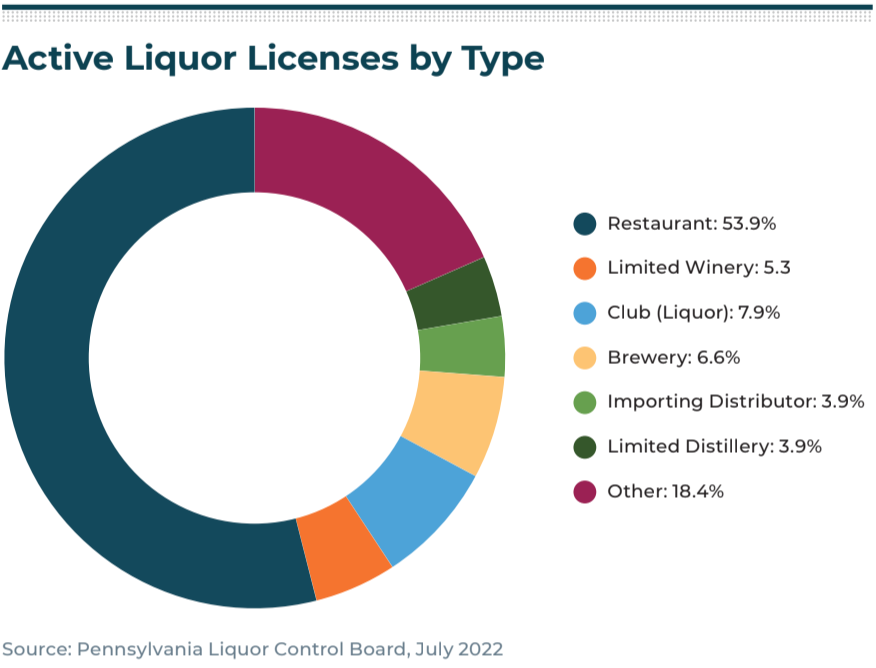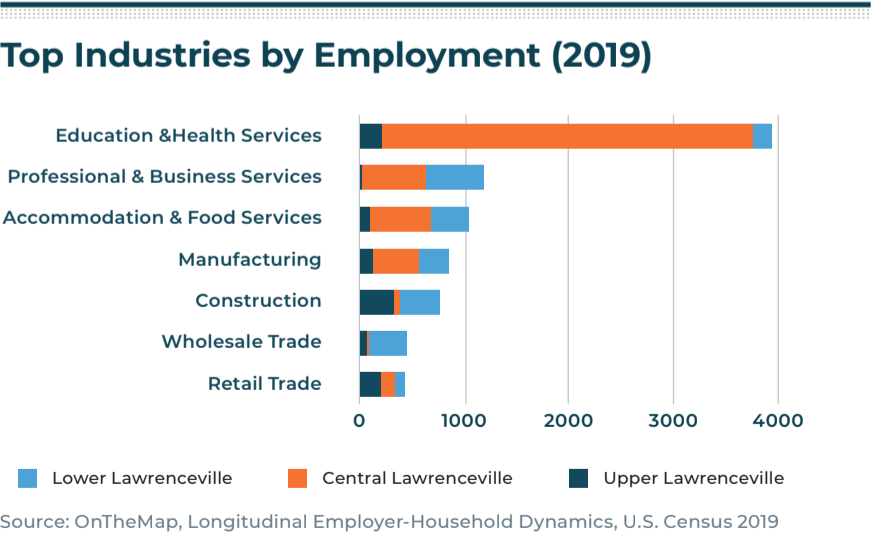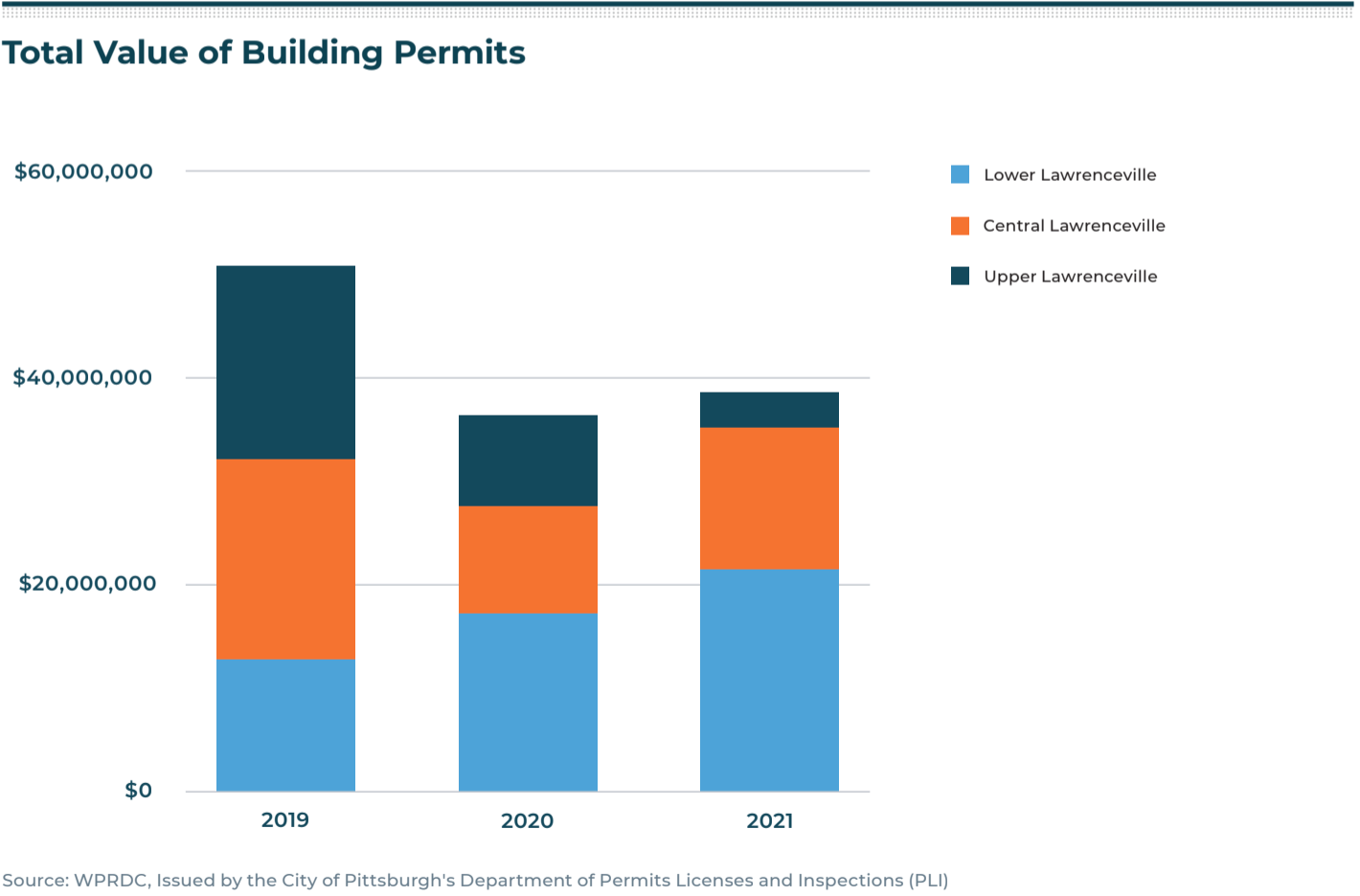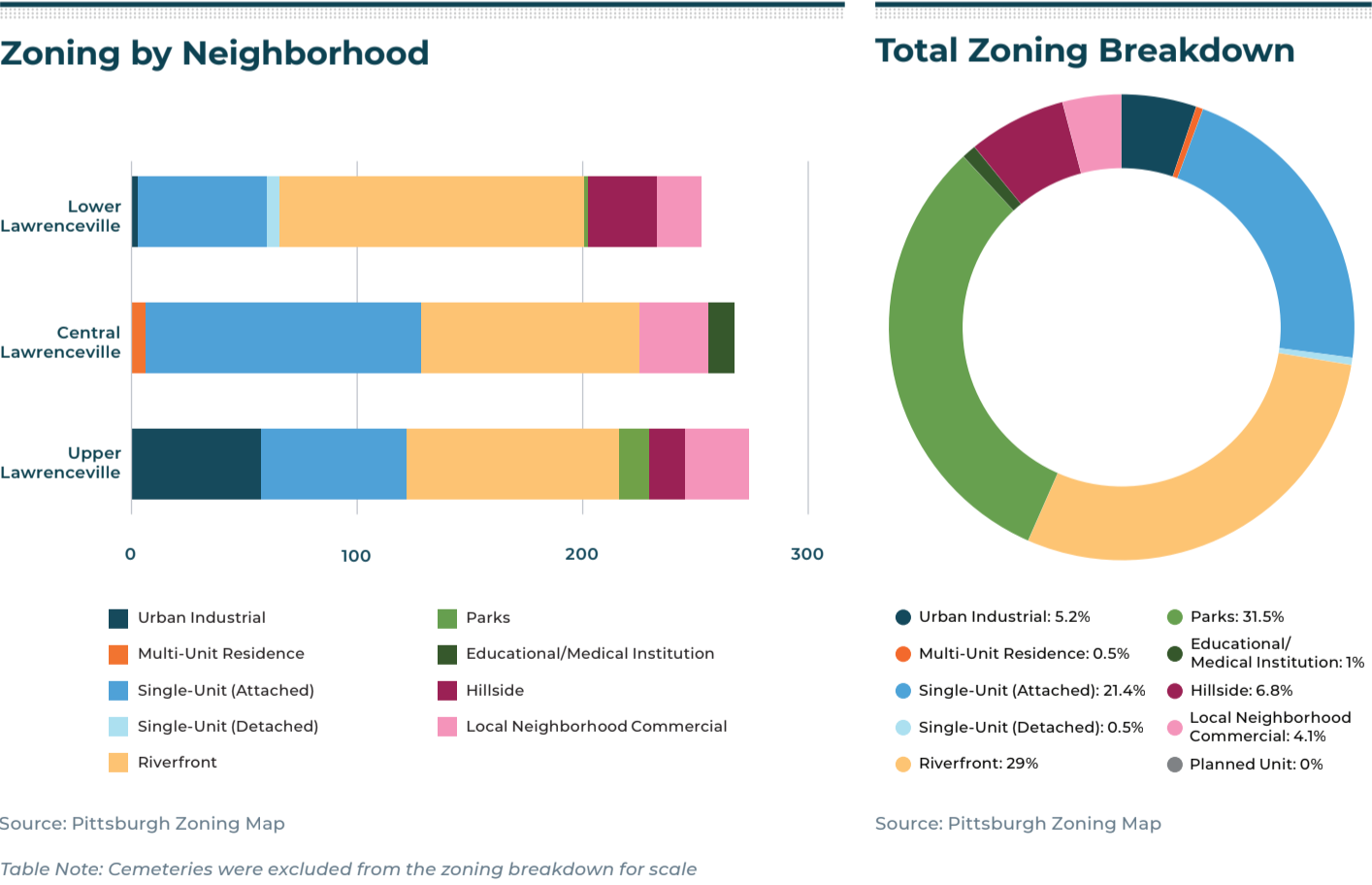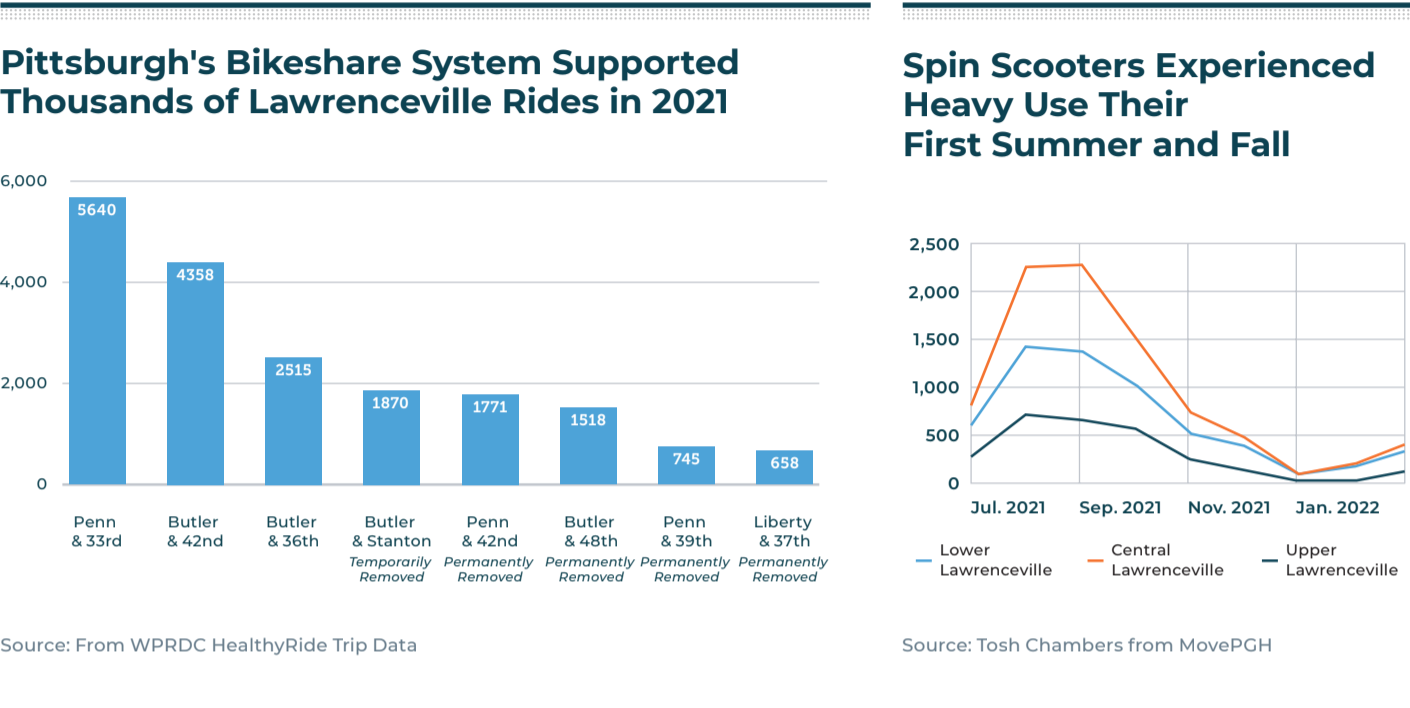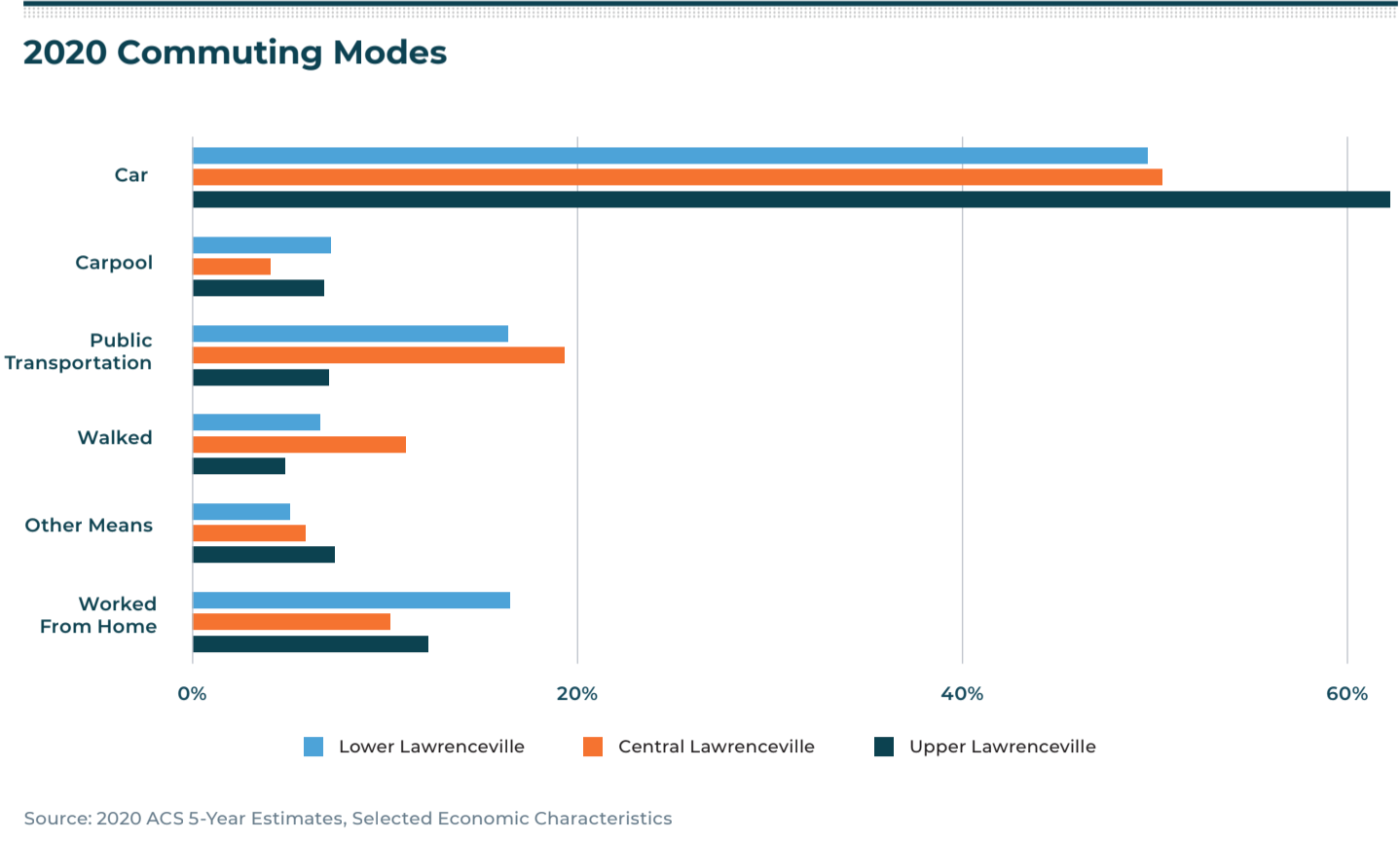Neighborhood Metrics
Over the past several years, Lawrenceville Corporation has helped create a Lawrenceville community of growing opportunities. Our neighborhood has changed dramatically as a result, and so too has our charge as an organization. As we continue efforts to better serve the Lawrenceville that exists today, we must begin by honoring and understanding our neighborhood’s past and everything that has happened to get us here.
To this end, Lawrenceville Corporation began an effort in 2021 to understand and document neighborhood change, an effort which culminated in the Lawrenceville Neighborhood Metrics Report. The report brings together information from census and municipal data, expertise from contacts across the city, and insights from our own programs and research. In some instances, it reveals truths hidden beneath the surface. In others, it reflects and affirms the lived experience of our community members, serving to quantify and contextualize these observations.
Information is an invaluable resource, and it is the goal of this project to share it with the broader community, with this webpage as the central hub. Read the full report now, or continue below for the highlights.
Some Quick Facts
Report Overview
To explore the contents of the Lawrenceville Neighborhood Metrics Report, as well as some initial findings, click through the tabs below. Further analysis is ongoing and will be shared as part of the final report.
The first part of the report, Living in Lawrenceville, is broken into three sections:
- Demographics pulls primarily on 2010 and 2020 Census Data to quantify the change in residential composition, exploring questions of age, race, and poverty.
- Housing uses a variety of sources to investigate housing composition, rising costs, the loss of subsidized housing availability, and new affordable housing developments.
- Neighborhood Wellness summarizes information related to public safety and food security.
The second part of the report, Economic Vibrancy, is broken into two sections:
- Lawrenceville’s Main Street Corridors is the result of a business district-wide survey led by LC staff in March 2022. Through this effort, we collected information including occupancy, condition of storefront, and type of business, among others.
- Economic Development and Investment is the result of an analysis of building permits, real estate sales, and ownership, as well as a review of development projects brought through the community process in recent years.
Part three of the report, Land Use and Environment, explores the following:
- Land Use includes current zoning and land use data.
- Mobility includes car ownership and commuting data from the 2020 Census, ridership data from POGOH Bikeshare, Pittsburgh Regional Transit, and Spin Scooters, among other data.
- Environment includes everything from tree canopy cover and green space to energy use and air quality.
